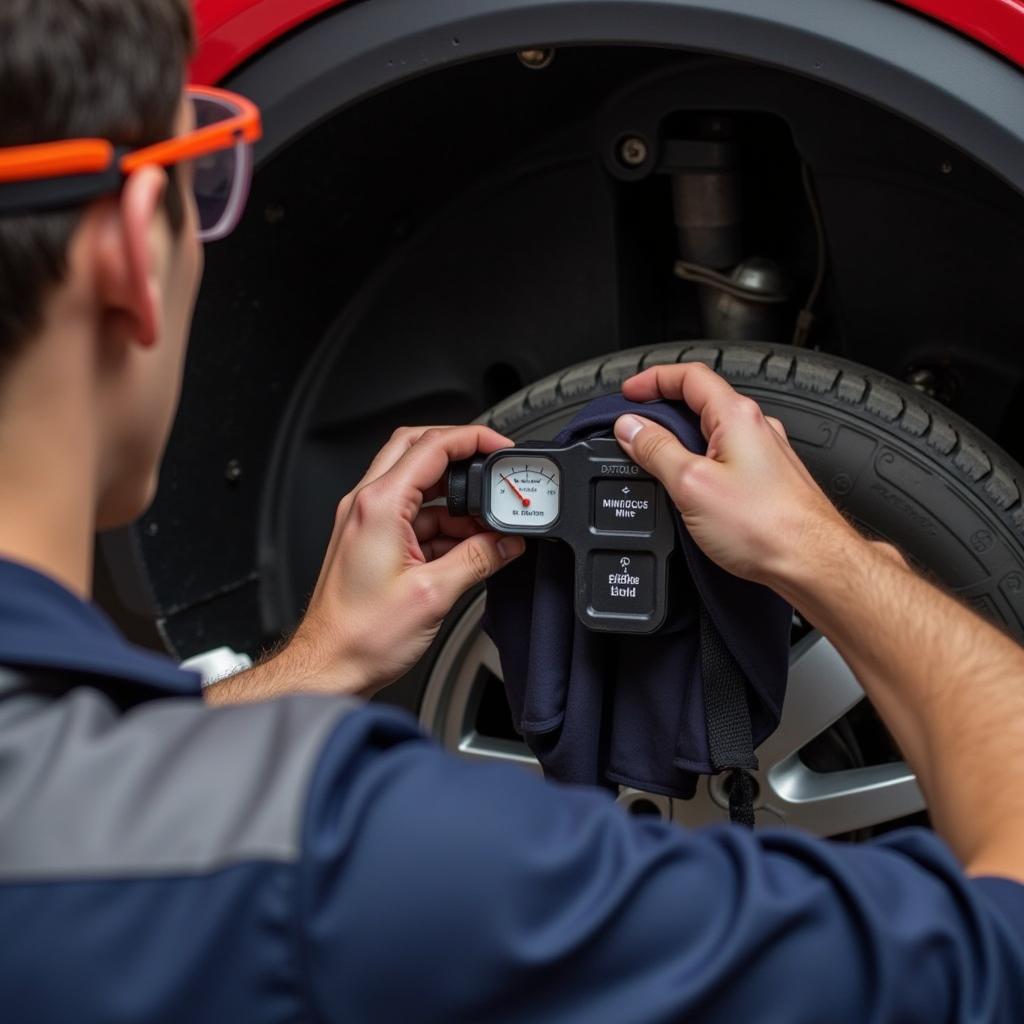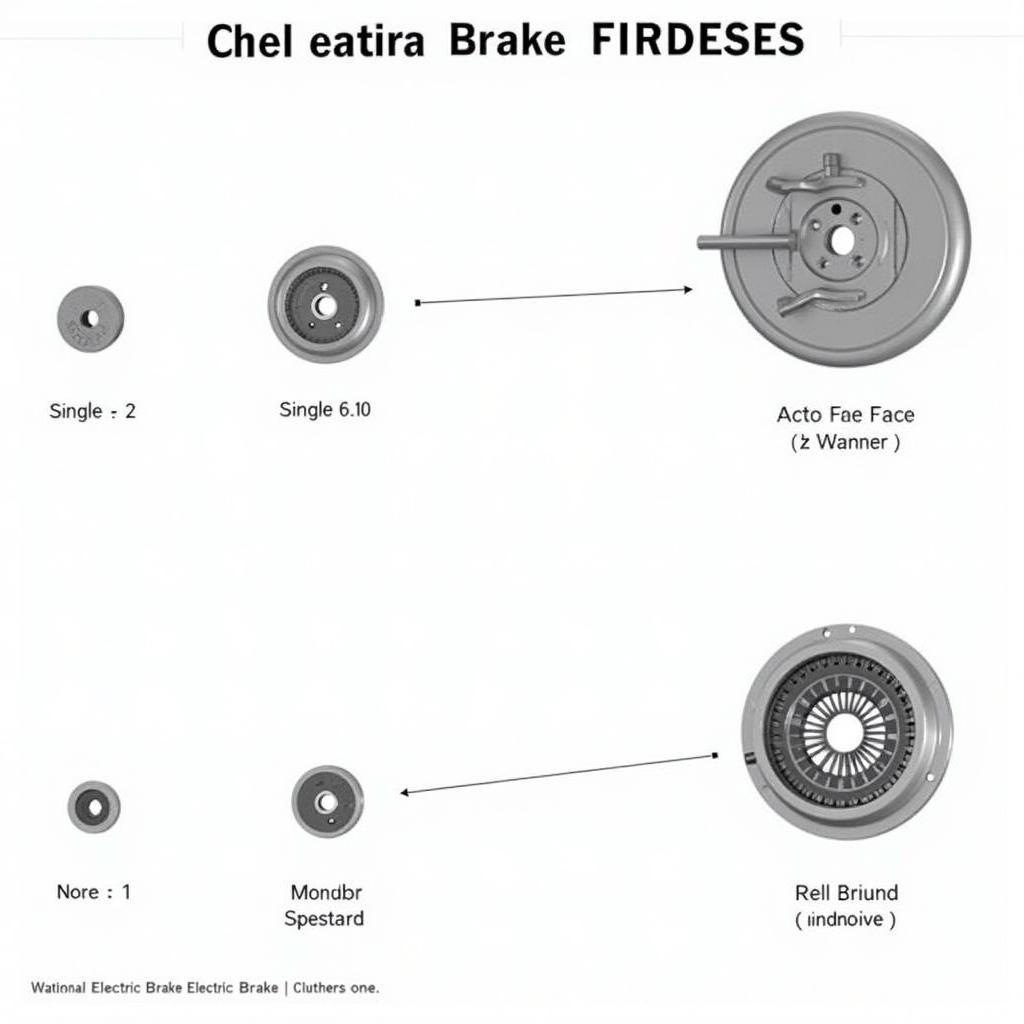The dreaded “service brake booster” warning on your 2004 Chevy Tahoe can be a cause for concern. This guide will delve into the common causes, diagnostic procedures, and potential solutions for this issue, offering valuable insights for both DIY enthusiasts and those seeking professional assistance. We’ll cover everything from understanding the brake booster’s function to remote software solutions and programming options.
Understanding the Brake Booster in Your 2004 Chevy Tahoe
The brake booster is a crucial component of your Tahoe’s braking system. It multiplies the force you apply to the brake pedal, making it easier to stop your vehicle. A malfunctioning booster can significantly impact braking performance, compromising safety. Common symptoms include a hard brake pedal, reduced braking power, and of course, the “service brake booster” warning light. Ignoring this warning can lead to more serious problems and costly repairs down the road.
Common Causes of the Service Brake Booster Warning
Several factors can trigger the service brake booster warning in a 2004 Chevy Tahoe. These range from simple issues like a vacuum leak to more complex problems with the booster itself or related components.
- Vacuum Leaks: A vacuum leak is one of the most frequent culprits. The brake booster relies on vacuum pressure to function, and a leak can disrupt this process.
- Faulty Check Valve: The check valve maintains vacuum pressure in the booster. If it fails, the booster won’t receive the necessary vacuum.
- Damaged Vacuum Hose: A cracked or disconnected vacuum hose can also cause a loss of vacuum pressure.
- Bad Brake Booster: Over time, the brake booster itself can wear out or become damaged internally.
- Electrical Issues: Problems with the brake booster sensor or wiring can also trigger the warning light.
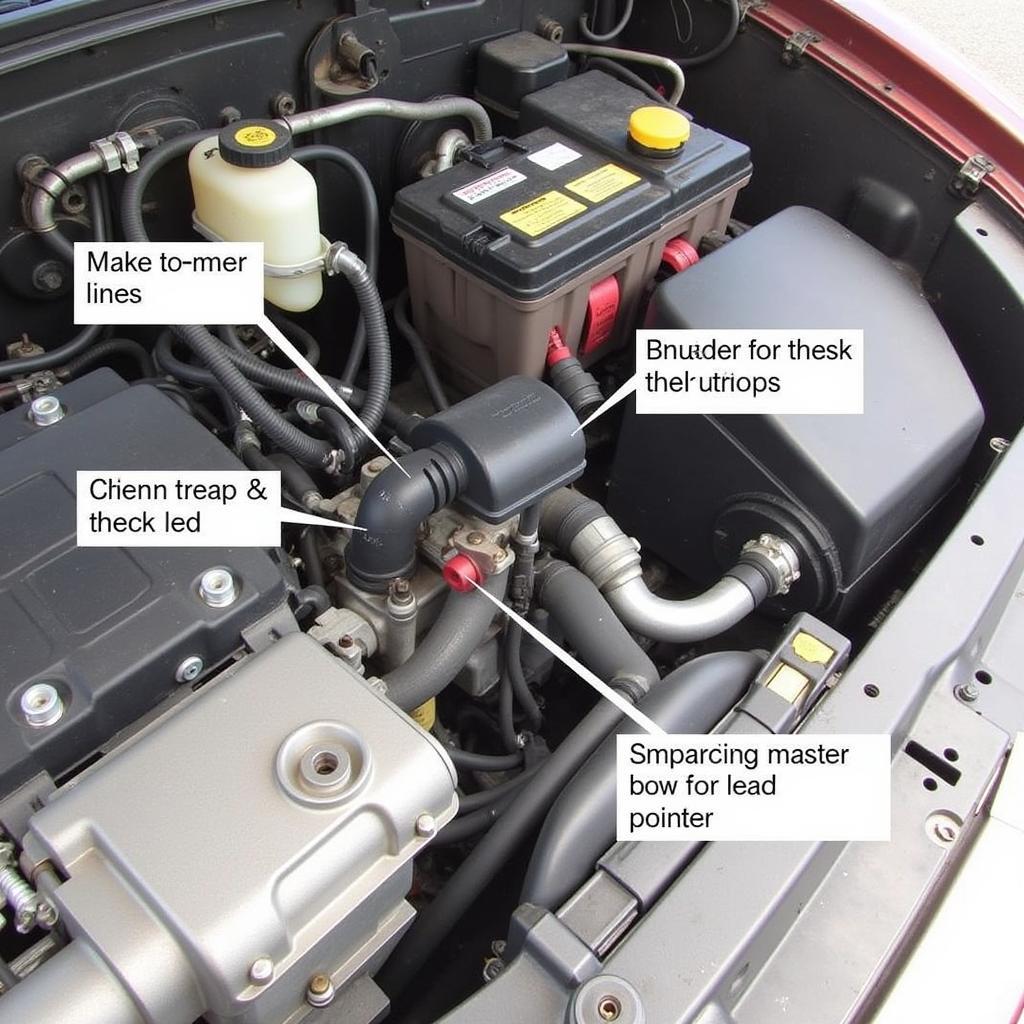 2004 Chevy Tahoe Brake Booster Location Diagram
2004 Chevy Tahoe Brake Booster Location Diagram
Diagnosing the Problem
Accurately diagnosing the issue is crucial for effective repair. Here’s a step-by-step guide:
- Check for Vacuum Leaks: Inspect the vacuum hoses for cracks, kinks, or disconnections. Listen for a hissing sound, which can indicate a leak.
- Inspect the Check Valve: Test the check valve to ensure it’s holding vacuum pressure.
- Test the Brake Booster: Use a vacuum pump to test the booster’s ability to hold vacuum.
- Scan for Diagnostic Trouble Codes (DTCs): Use an OBD-II scanner to retrieve any stored codes related to the brake booster.
- Check Wiring and Connectors: Inspect the wiring harness and connectors for damage or corrosion.
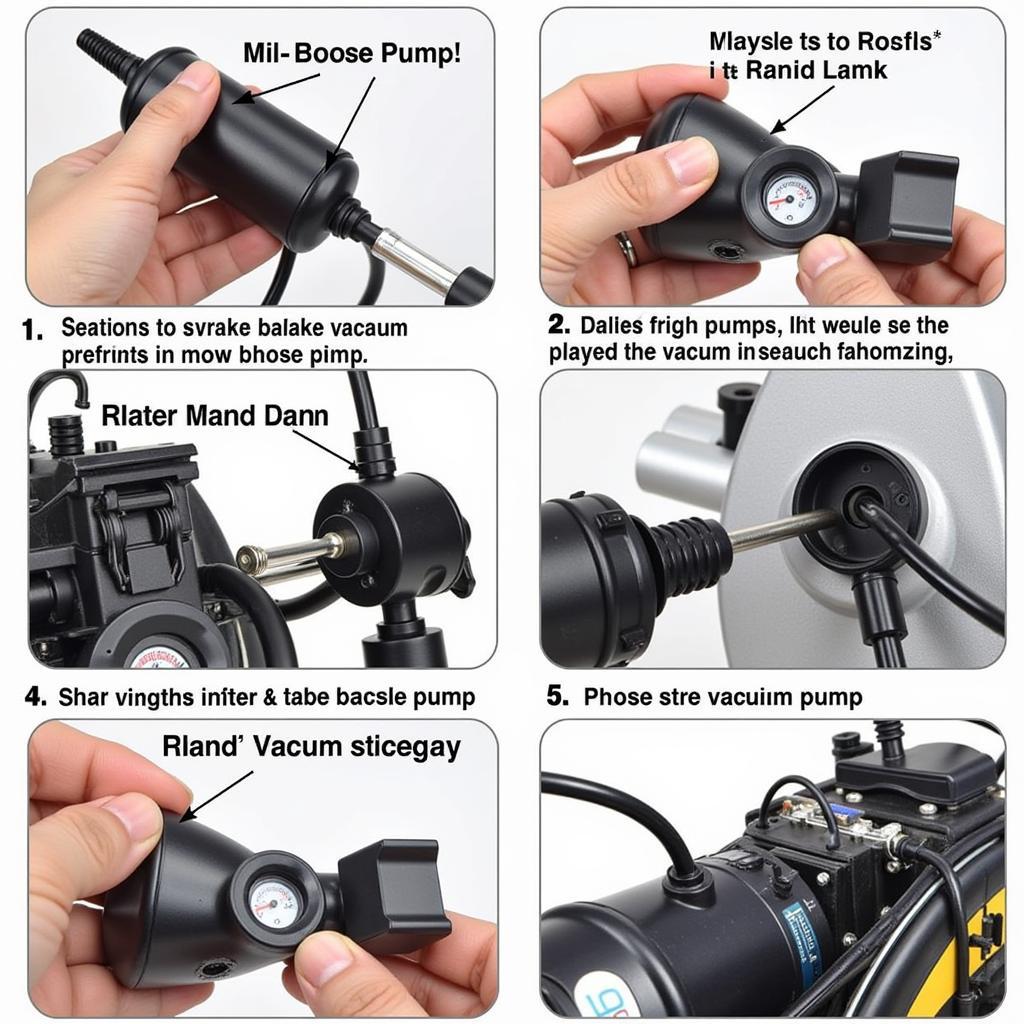 Testing the Brake Booster Vacuum on a 2004 Chevy Tahoe
Testing the Brake Booster Vacuum on a 2004 Chevy Tahoe
Repairing the Brake Booster Issue
Depending on the diagnosis, repairs can range from simple fixes to more involved procedures:
- Repairing Vacuum Leaks: Replace any damaged or disconnected vacuum hoses and tighten loose connections.
- Replacing the Check Valve: A faulty check valve usually requires replacement.
- Replacing the Brake Booster: A bad brake booster will need to be replaced. This might involve bleeding the brake system.
- Addressing Electrical Issues: Repair or replace any damaged wiring or connectors related to the brake booster.
Remote Software Solutions and Programming
In some cases, the service brake booster warning might be triggered by software glitches. Remote software solutions can offer a convenient way to diagnose and address these issues. Remote programming can update the brake booster’s control module, resolving software conflicts and potentially eliminating the warning light.
“Remote diagnostics and programming are increasingly valuable tools in modern automotive repair,” says Michael Carter, Senior Automotive Diagnostic Technician at Carter’s Auto Solutions. “They can save time and money by allowing us to identify and address software-related issues without requiring the vehicle to be physically brought to the shop.”
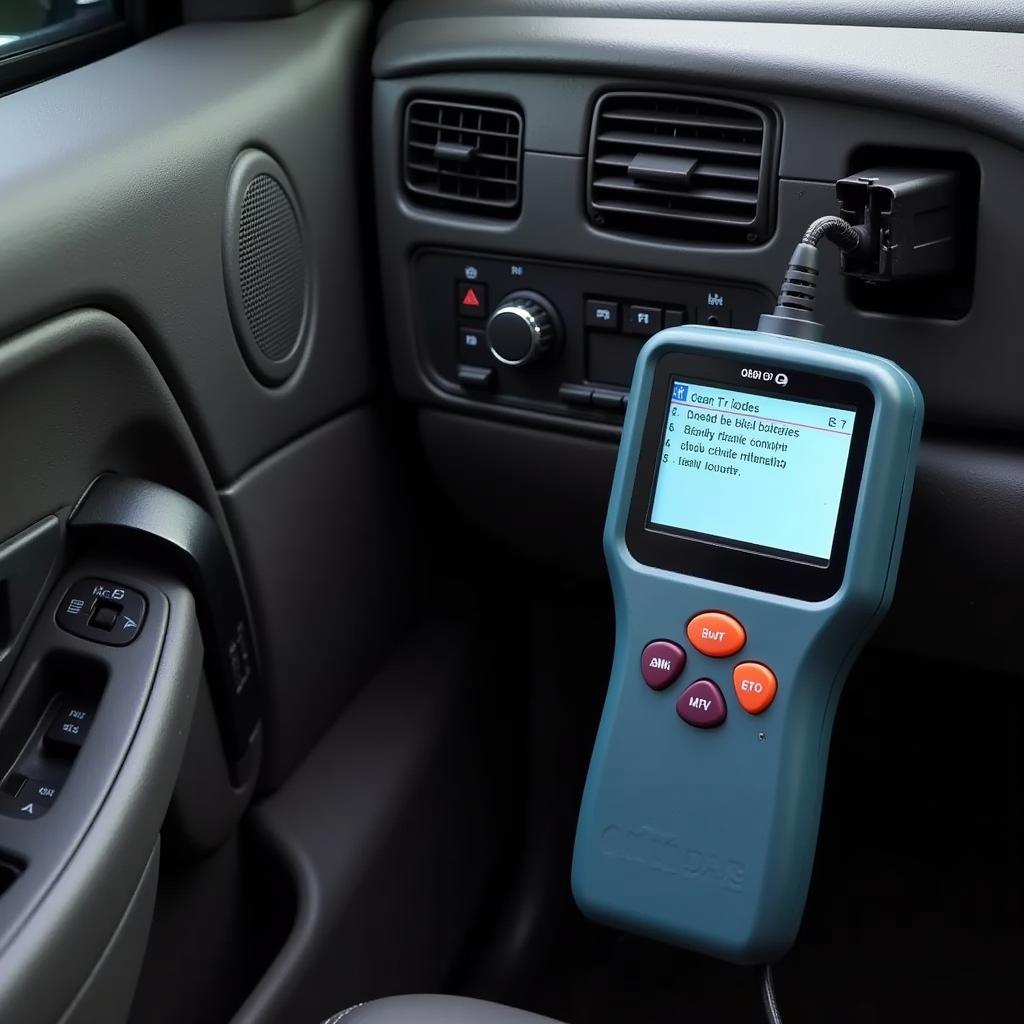 Using an OBD2 Scan Tool on a 2004 Chevy Tahoe
Using an OBD2 Scan Tool on a 2004 Chevy Tahoe
Conclusion
The “2004 chevy tahoe service brake booster warning” shouldn’t be ignored. Addressing the underlying issue promptly is essential for maintaining safe and reliable braking performance. From vacuum leaks to software glitches, this guide has covered the common causes and solutions, offering you the information you need to get your Tahoe back on the road safely.
“Don’t underestimate the importance of a properly functioning brake booster,” adds Carter. “It’s a critical safety component, and addressing any warning signs immediately is always the best approach.”
FAQ
- Can I drive my Tahoe with the service brake booster warning light on? While you might be able to drive, it’s strongly recommended to avoid driving and address the issue immediately as your braking power will be reduced.
- How much does it cost to replace a brake booster? The cost varies depending on the specific vehicle and labor rates, but generally expect to pay between $300 and $800.
- How long does it take to replace a brake booster? The replacement process typically takes a few hours.
- Can I replace the brake booster myself? While possible for DIYers with mechanical experience, it’s generally recommended to have a qualified mechanic perform the replacement.
- What happens if I ignore the warning light? Ignoring the warning light can lead to further damage to the braking system and potentially create a dangerous driving situation.
- Can a vacuum leak cause other problems besides the brake booster warning? Yes, a vacuum leak can affect engine performance and fuel economy.
- How often should the brake booster be checked? It’s a good idea to have the brake system inspected during regular maintenance checks.

